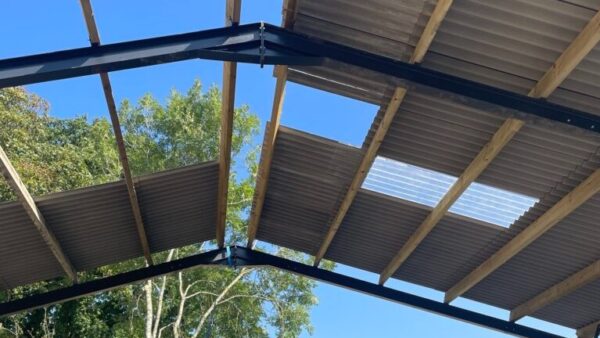
Image: Dreamstime/Baz777
The government should create a central register of asbestos in public buildings as part of measures to reduce the harm the material still causes, 20 years on from when it was banned in the UK.
That’s the call made in a new report which warned that British asbestos regulation is far more lax than in some other European countries.
Think tank Res Publica’s report “Don’t Breathe In”, warned despite asbestos being outlawed in UK construction in 1999, there are still 6m tonnes of asbestos spread across 1.5m public buildings.
The report detailed how asbestos remains a serious threat to public health, especially in public buildings. Some 94% of hospitals and 80% of schools contain the material. The substance remains the UK’s number one occupational killer, causing more than 5,500 deaths last year.
Meanwhile, the report highlighted how the method used to measure airborne asbestos in public buildings in France, Germany and the Netherlands was 10 times more accurate than that used in the UK. The UK also permits schoolchildren to breathe up to 100,000 airborne particles today under current regulations – 10 times more than is permitted in Germany.
The report called for the government to establish a central register of all asbestos currently in place in public buildings across the UK, including schools, hospitals and social housing. The register should identify the precise location, type and condition of asbestos, it said.
Adopt international standards
It also recommended that the government should bring the health and safety regime for the management of asbestos up to the highest international standards, as practised in Germany, the Netherlands and France.
And it urged the government to commission a cost-benefit analysis for the removal of all asbestos from public buildings in the UK, with a commitment to a timeframe for the phased removal of the material on the basis of danger and risk to public health.
Among other recommendations were for the Health and Safety Executive (HSE) to include all those who have died from mesothelioma over the age of 74 in its occupational statistics in order to “accurately measure and represent fatality figures” and ensure that where death is attributable to mesothelioma that efforts are made to capture all past occupations.
It also called for the HSE to assure, rather than assume buildings are safe through the requirement for periodic sensitive air monitoring using electron microscopy.
The report said: “It is now twenty years since the UK banned the manufacturing and use of all asbestos, meaning buildings constructed after 1999, when the ban came into force, no longer contain this deadly material.
“However, anything built or refurbished before this date may still contain asbestos, where it remains in an increasingly aged and deteriorating condition. The UK today remains a storehouse of asbestos. There are six million tonnes of asbestos in the UK, most of which can be found in over 1.5 million buildings across our public estate, including our hospitals and schools. This means that many people are still exposed to the potential dangers of asbestos on a daily basis.”
Comments
Comments are closed.











Silly question
If the think tank research identified 6m tonnes of asbestos over 1.5 million buildings why are they not producing the register ?
They obviously have access to the expertise and presumably have had access to the buildings
Is this just an extrapolation or worse still “scare mongering” ?
I totally agree with Darren’s comment and would like to add the following:
If building owners, for both public and private buildings, were compliant with the Control of Asbestos Regulations 2012 then compiling a central register would be a very simple process. However, sadly many are failing to fulfil their legal duty (most notably under Regulation 4) and that does not seem to be recognised within the Think Tank’s recommendations and that is fundamental omission.
Yes, the research highlights disparity between different countries but before ‘improving’ we (the UK) need to provide resource to fulfil the current standards. Current funding for LA’s makes this a near impossible task and non public sector bodies can sometimes be guilty of being ignorant on the matter.
Also, in my opinion, the research seems to have unrealistic targets by saying that all asbestos should be removed. Many buildings have ACM’s within the structure so total building renewal would be the only option. This would be unaffordable and in many cases totally unnecessary. In addition I doubt that the HSE would support ‘removing all asbestos’ as removal creates a degree of risk so unnecessarily removing ACM’s creates unnecessary risk.
The correct thing to do is to prioritise risk and only remove or encapsulate ACMs which present risk rather than creating an overreaction to a manageable problem.